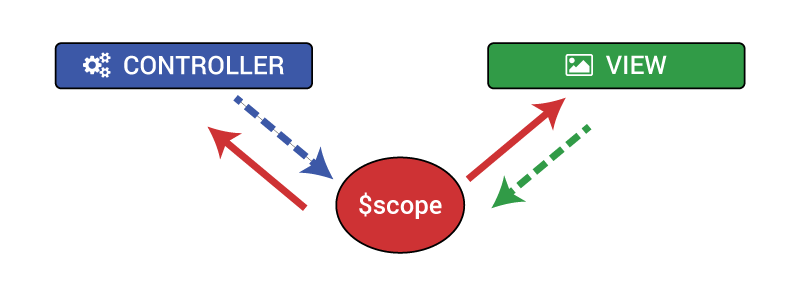Developers are always faced with the trouble of writing long and tiring codes to build applications. This code is written using different platforms that allow building applications. During the beginning phase of any development project, directory structure will never matter much. However, this leads to many developers ignoring good practices for building applications.

Though if you look at the short term, developers get the privilege of coding briskly due to ignoring some practices. However, when you consider the longer duration, maintainability of the code will be a big question mark.
AngularJS is a platform that is still in its nascent phase relatively, as the developer community is yet to figure out the perfect ways and methods that can ensure correct development; development that will work. You need to understand that there are varied ways in which you can perfectly structure any application. You can also take guidelines from already mature and existing frameworks that can prove helpful. Along with these guidelines, you can also implement aspects that are specific only to AngularJS.
So let us now look into some practices that can be beneficial for you while building apps using AngularJS:
1. Structuring is important
The primary aspect that is an issue when developers proceed with building applications using AngularJS is scarcity of knowledge with regards to organization of files. Further, there are some who will not even understand which files will be needed.
For getting a clear picture about the above aspects, experts usually suggest the following:
• Developers have the option of using angular-seed which is a skeleton of typical applications for AngularJS. The only thing on part of developers will be of cloning the repository. Once this is done, you can go ahead with the development.
• The other option is using yeoman. This tool helps in creation of skeletons along with adding tools like grunt and bower that are used expansively for development of applications for JavaScript based on preferences of users.
Though you may have understood the two options and tools, care needs to be advocated at the start. This is primarily because you have to first understand what the exact needs of your project are.
2. Organize modules

AngularJS allows developers the option of organizing application via modules. These modules are containers of application parts. Just as no standard or rule applies for modularizing applications, taking into consideration the business nature rather than various components that are created is necessary.
Developers can play around with the framework of AngularJS by creating varied modules for directives, services, controllers and so on. However, this might not be a good option to choose. When choosing to use controller in some application, along with this module, requirement for service module may be needed. So if the presence of a login module is available, creation of directives, services, controllers, etc. under myapp.login is possible. So in future, dependencies will be negated as everything will be available under one module.
3. Object scope

There are 3 easy rules with regards to object scope in AngularJS as follows:
• Scope needs to always be in write-only for controller module. This means that the controller will be in charge for using some other component such as service for getting data which template displays and then write the obtained data in object scope.
• The scope has to always be in read-only for templates. This means that AngularJS allows developers to write codes which modify scope in templates. However, it is recommended that you tread cautiously in this regards, or better, not opt for it.
• Create properties inside object not scope. Developers usually make this mistake of thinking that scope is model component which AngularJS speaks about. As a matter of fact, scope is only a method for binding model with template.
4. Dependency injection

AngularJS injectors are powerful and immensely useful; however, this is true only if this is used in the right manner. This injector is in charge for creation of components, resolve dependencies and provide components whenever needed.
You gain the following benefits due to this:
The most useful and prominent benefit is achieved while writing application tests. For every component created by following syntax of AngularJS, we will need other components for taking care of resolving dependencies. So while creating tests, you can simply create same components; however, with dependencies created ourselves. This eventually leads to good coverage.
A concluding note:
Please remember that all the points that are mentioned above will be dependent of the exact application type that you will intend to build. Factors such as nature of business, project size and uniqueness of the project are important to be considered. If you consider all these pointers before you actually start development, this will mean that the application will be structured correctly and will be in accordance to conventions shared and practiced by AngularJS developers.
Author Bio: Mehul Rajput is a CEO of Mindinventory, a leading web development and mobile app development company specialized in AngularJS development services. He does blogging as hobby and love to write on web and mobile technologies.
